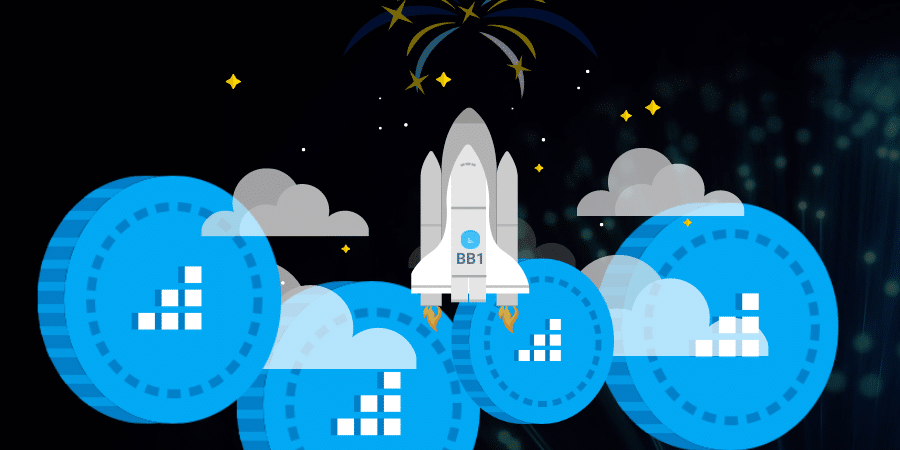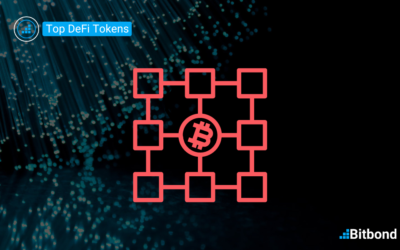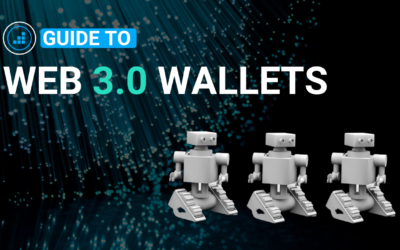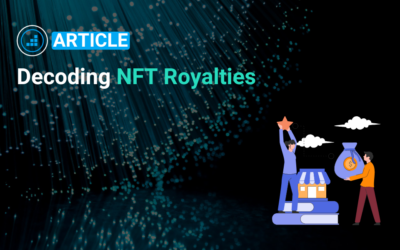Table of Contents
Tokenization on blockchain and Distributed Ledger Technology (DLT) has gained significant traction across the world. Emerging countries like China are remarkably boosting blockchain implementation by experimenting and developing Central Bank Digital Currencies (CBDC), whereas developed countries such as Germany are introducing game-changing regulations to ensure wider institutional adoption of blockchain and digital assets in their financial systems.
Consequently, new financial instruments such as tokenized securities, NFTs, and crypto-assets in general, have become popular and desired by investors and financial institutions.
What makes this technology and these forms of digital assets so attractive? To develop a better understanding of tokenized securities, we need to first outline what securities are in general.
Why are tokenized securities the future of financial instruments?
Understanding traditional securities
In its core meaning, a financial security is a fungible, and tradable, financial instrument that holds a monetary value, typically used to raise capital publicly or privately.
However, the legal definition of a security can differ across different jurisdictions. According to the German Securities Law (WpHG Wertpapierhandelsgesetz), securities (or Wertpapiere), “(…) whether or not represented by a certificate, mean all categories of transferable securities with the exception of instruments of payment that are by their nature negotiable on the financial markets, in particular:
- Shares,
- Other investments equivalent to shares in German or foreign legal persons […]
- Debt securities:
a. in particular profit participation certificates, bearer bonds, and order bonds as well as depositary receipts in respect of debt securities;
b. any other securities giving the right to acquire or sell securities specified in numbers 1 and 2 or giving rise to a cash settlement determined by reference to securities, currencies, interest rates or other yields, commodities, indices or measures […]”
In other words, securities are any form of tradable financial asset broadly categorized into debt, equity, and derivative securities. Listed on a stock exchange, they can are publicly traded by having issuers seek security listings and attract investors in a regulated market.
Alternatively, the sale of securities can take place privately between institutions through private placements. This is considered as an over-the-counter (OTC) trade, where securities are often traded among investors by the use of informal electronic trading systems (e.g. on the phone or online).
Following a security offering, newly issued securities can be made available on the so-called secondary market where they are transferred from one investor to another in exchange for cash or other assets.
The set-up described above is highly centralized and time-consuming as it relies on many intermediaries during the whole process of issuance, settlement, and custody of assets.
The central players that usually take part in this process are:
- The investor that makes a placement through the investor’s bank.
- The issuer which involves a bank to have a bank account/securities account.
- The clearing house (or CSD) which is in charge of transferring the securities after receiving them from the issuer’s bank to the investor’s bank upon determination of ownership (completion of investment).
This method is time consuming as the whole process requires communication and confirmation within all parties involved. The process is consequently made highly inefficient and brings significant risks to participants which will be outlined in this article.
The process of issuing a security can take up to several months in some countries depending on the bureaucratic/legal process required. The good news is that tokenized securities cater to these inefficiencies thanks to the underlying technology they run on, drastically improving the traditional process.
What is a tokenized security?
Tokenized securities are end-to-end fully digital securities issued on the blockchain or so-called DLT. However, tokenized securities are different from traditional digital securities that we already know. The latter undergo highly complex processes as described earlier.
On the other hand, tokenized securities use encrypted end-to-end communication to conduct processes (settlement or defining ownership) automatically. Therefore, bringing significant improvements to securities issuances overall.
Let’s assume that, in the traditional set up, the ownership of a security is still represented by a paper certificate (which is in fact still the case for some instances in Germany). The process of asset tokenization de-materializes securities, meaning that the proof of ownership is now represented by a digital token. This digital token runs on DLT and executes automatically through smart contracts.
Issuers are now able to reach a wider group of investors. Access to global audiences becomes significantly cheaper with tokenized security. The processes are carried out mainly digitally and keeping records becomes “paperless”.
With tokenized securities, the transaction fee is dramatically reduced due to the ability to carry out a direct relationship with a global audience without the need for third parties which are replaced by DLT. Represented by a token (e.g ERC-20 Token), tokenized securities are held in a digital wallet.
In capital markets, tokenized securities offer substantial efficiency gains in the issuance process:
- Digital end-to-end investment flow
- Fewer intermediaries
- Lower costs
- Reduced complexities
- Global transferability and instant settlement of funds
This is achieved thanks to features offered by blockchain technology, such as automatically verifying and recording ownership on a distributed ledger that is publicly accessible.
The image below compares between traditional securities offering vs a security token offering:

Blockchain based tokens are radically fungible through the use of public and permissionless distributed ledger technology. Their independence from third parties offers global and instant settlement at minimal costs.
The 3 Advantages of issuing tokenized securities
1. Issuance of tokenized securities
Issuing a traditional security requires at least 5 different parties to be involved in the whole process of issuance:
- One or several investors,
- The related investor Bank,
- The issuer,
- The payment agent (usually covered by the issuer bank). Its role is to channel payments between issuers and investors.
- Clearing house also known as the Central Securities Depository (CSD) which is responsible for holding securities in order to easily transfer ownership.
The involvement of a CSD, contributes to a time lag between parties, additional costs, and provides an individual entity with central power. It is the registrar responsible of tracking ownership.
Blockchain, or DLT, spare us from such role played by the CSD. It records ownership automatically alongside enabling instant transfers at very minimal costs.
The flow of preparing a transaction and involving all stakeholders for the issuance is remarkably complex and inefficient as it can take up to a couple of months.
Bitbond’s tokenization platform enables effortless creation of tokenized securities and their distribution to investors. Contact us if you would like to learn more on leveraging Bitbond technology.
The image below describes the process flow of issuing a traditional security vs a tokenized security.

As we can see, issuing tokenized securities bring radical improvements to the process for issuers and the investor. The need for intermediaries is eliminated and/or reduced in the process.
Paired with fiat-denominated stablecoins, tokenized securities enable settlement payments to be executed instantly & automatically, the process is described as a token swap. Unnecessary complexities in the issuance process are eliminated, resulting in faster issuance, alongside a drastic reduction of issuance costs.
Tokenized securities allow global transferability of tokens which, as mentioned previously, provides access to an international investor base. Instant real-time settlement is a key feature of tokenized securities as they eliminate settlement risk for all parties involved.
The advantages of issuing tokenized securities are clear, offering a more efficient and cost-effective procedure.
In blockchain, a wallet is the application in charge of holding the assets.
However, there are also third party custody services available for investors and institutions, which in Germany require a crypto custody license as of January 2020.
2. Custody of tokenized securities
Custody is an important aspect in securities as it ensures their safekeeping from theft or loss.
In the traditional set up, custodians are usually large and reputable financial institutions (e.g. JP Morgan Chase, BNY Mellon) as they often hold assets worth billions of dollars. Other than safekeeping of assets, custodians often provide additional services such as transaction settlements, dividend and interest payments, tax support, and foreign exchange.
However, these services can come with hefty fees alongside the costly custodial fees.
Defining ownership of funds along with ensuring a secure and fast transfer of assets upon trading via a centralized system requires time. The process involves more or less the same number of players as described previously in this article.
We pointed out that tokenization allows for the elimination of CSD as the decentralized ledger replaces the idea of a centrally managed registrar to keep track of ownership. The ledger takes out this function by recording all transactions automatically and irreversibly.
Blockchain technology, solves the ownership traceability issue by allowing secure and instant transfer of assets digitally without the need for third party validation. This is completed through the use of a digital wallet which allows sending and receiving digital assets via highly secure encrypted communication.
The wallet is the equivalent of an investor’s bank account, where they would deposit their funds.
Handling digital wallets comes with great responsibility. A public key is issued to which you receive funds, and the private key is the password that gives access to these funds.
Just like securities are stored in highly secured vaults managed by banks, tokenized securities are stored in such wallets, therefore respective key management is of high importance, especially when storing millions and billions worth of funds.
Therefore, demand for third party custody services are on the rise, mainly by big institutions that are getting more and more involved in the cryptocurrency and digital assets space. This article by Dr. Karl-Michael Henneking clearly explains how licensed third party custody services can contribute to greater institutional adoption of crypto assets and tokenized securities.
Bitbond’s digital asset custody platform can easily be integrated with digital asset custody products of the biggest institutional-grade Key Management Software (KMS) providers such as Fireblocks. The platform enables Issuers and Investors to store, transfer and trade these digital assets in a both secure and user-friendly way.
KMS replaces private keys with Multi Party Computation (MPC) which is controlled with so-called shares.
The representatives of the custodian (“Approvers”) need to co-sign withdrawal transactions of wallet users exceeding certain transaction limits to mitigate theft risks. The shares are stored locally on the devices of Approvers (e.g. laptop or desktop computers, mobile phones) from where Approvers co-sign withdrawal transactions.
Investors can access and use their custody wallet via a web-based interface. The custody wallet can be credited with stablecoins to invest in security token offerings conducted via the Platform.
After submitting an order to an offering, the stablecoins are exchanged with the respective tokenized securities in a delivery vs payment transaction upon issuance of the tokens.
Investors also receive coupon payments into their custody wallet which they can either redeem to fiat currency or use to invest in further offerings. Additionally, Investors can transfer and trade their tokenized securities from their wallet.
3. Settlement and payments in the tokenized securities context
It is very important to understand that having payments settled on-chain is also necessary to unleash the full potential of tokenized assets. On-chain payments allow for instant delivery vs payment (DvP) transactions, the asset and the coin are directly exchanged within the protocol. This eliminates counter party risk.
To simplify it, completing payments on the ledger is indispensable as it ensures instant delivery of assets upon investment. Not only does this save a tremendous amount of time and reduces costs imposed by intermediaries, it also provides the asset seller (issuer) with the benefits of reducing risk of not receiving the funds invested to almost 0 and vice versa.
Investing in securities requires handling money transactions for the settlement process and any other form of payments that need to take place, such as coupon / interest payouts. In Europe, the common settlement period for most securities is 2 business days after the day of a transaction (T+2).
This means that the issuer must deliver the security’s certificate in exchange for the investor’s payment within that settlement period. Historically, this process was paper based where the investor would hand in the security’s certificate in exchange for cash or a check. Nowadays, it is completed through electronic fund transfer (EFT). An EFT is basically a transfer of money from one bank account to another electronically, commonly known through SWIFT.
Tokenization now paves the road for so-called stablecoins to be introduced. Stablecoins are e-money that are backed by assets or fiat currency, they are “Tokenized funds” (…) backed by funds (i.e. commercial money, e-money or central bank money) which an issuer or custodian holds for safekeeping; this implies that there is a commitment to ensuring that tokenized funds can be redeemed in full. The use of stablecoins allow instant settlement of investments and payments automatically & globally.
Bitbond’s stablecoin issuance platform allows for the issuance of fiat-backed e-money used for on-chain payments, including primary investments, coupon payments, trading and bond repayments. In secondary trades, on-chain payments allow for instant Delivery vs. Payment (DvP) , thereby eliminating settlement risk of transactions.
Issuers receive the funds raised from their offering in the form of stable coin payments into their wallet. Coupon payments are debited from their wallets and paid out to Investor wallets automatically. A fiat-backed stable coin (i.e. e-money or digital cash) is used within the platform for the following process steps:
- Investments during the subscription period of the offering
- Payout of coupon payments and repayments throughout the security lifecycle
Bitbond as a pioneer in tokenized securities and digital assets
Regulatory sphere for tokenized securities
Bitbond was the first issuer to receive BaFin prospect approval for its tokenized bond offering in Europe. This set a remarkable milestone in Bitbond’s approach towards our technology and the industry in general. Such an approach was groundbreaking as it contributed to the approval from a blockchain skeptical governing body at the time. Ever since Germany, and Europe in general. have been more welcoming to innovation via the use of blockchain and DLT.
In 2022, Bitbond launched its Web3 tokenization product Token Tool by Bitbond, enabling any user with a solution to effortlessly create tokens or launch token sales in just a few clicks.
in 2021, Germany put into force the eWpG which enabled regulated institutions to provide custody of crypto assets as a new type of ‘financial service’ by incorporating it into the German Banking Act (Kreditwesengesetz – KWG). This move came after the provision of digital asset custody has been added to the German Banking Act (KWG) as a regulated financial service in 2020. To obtain a crypto custody license, custody providers need to maintain a minimum core capital of EUR 125k and must have two executives competent in digital asset custody.
Europe has also introduced Markets in Crypto-Assets (MiCA) which is a proposed regulation in EU law. It is intended to help streamline distributed ledger technology and virtual asset regulation in the European Union whilst protecting users and investors.
The German Federal Government published its Blockchain strategy in September 2019, which places a focus on the application of blockchain in the financial sector:
- Objective 1: Open up German law to electronic securities
- Objective 2: Propose a bill regulating public offering of certain crypto tokens
- Objective 3: Create legal certainty for trading platforms and crypto custodians
What implications does this have for the future of tokenized securities?
Tokenized securities are rising in popularity. They bring significant efficiencies to the traditional securitization approach through the use and development of compliant new technologies.
FinTech companies like Bitbond develop innovative solutions to revolutionize the way securities are issued, stored, serviced and traded, thereby overhauling a trillion dollar industry controlled by a small number of powerful intermediaries for decades.
In this article, we learned about tokenized securities as a new financial instrument. We discussed three aspects where tokenized securities provide significant improvements. Followingly, we shed a light on the latest actions of governments and financial watchdogs to enable wider institutional adoption of blockchain technology and new instruments like tokenized securities.
We at Bitbond expect all newly issued securities to be tokenized by 2025. What do you think? Make sure to reach out and let us know your thoughts.
Are you looking to tokenize your securities? Get in touch or learn more.




